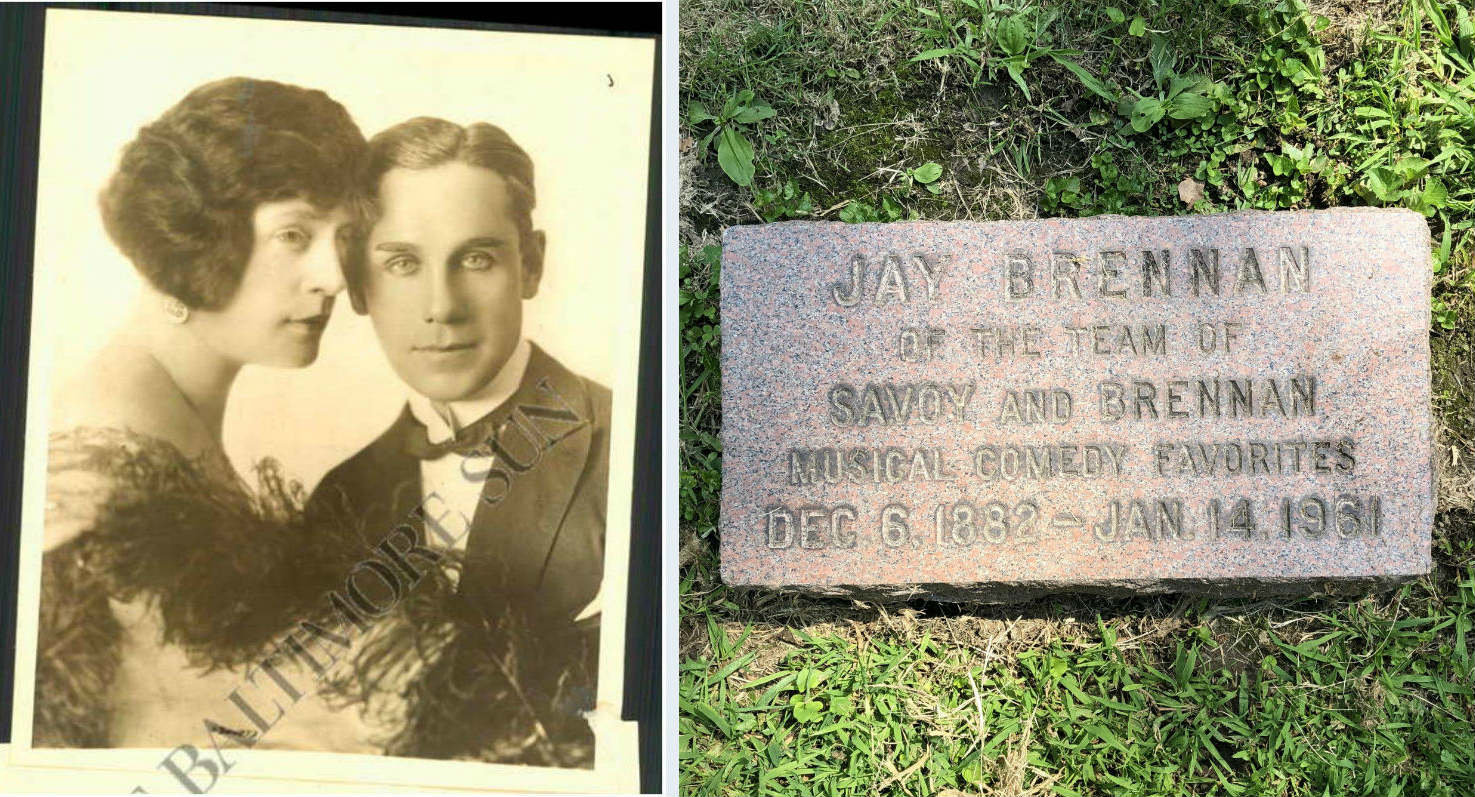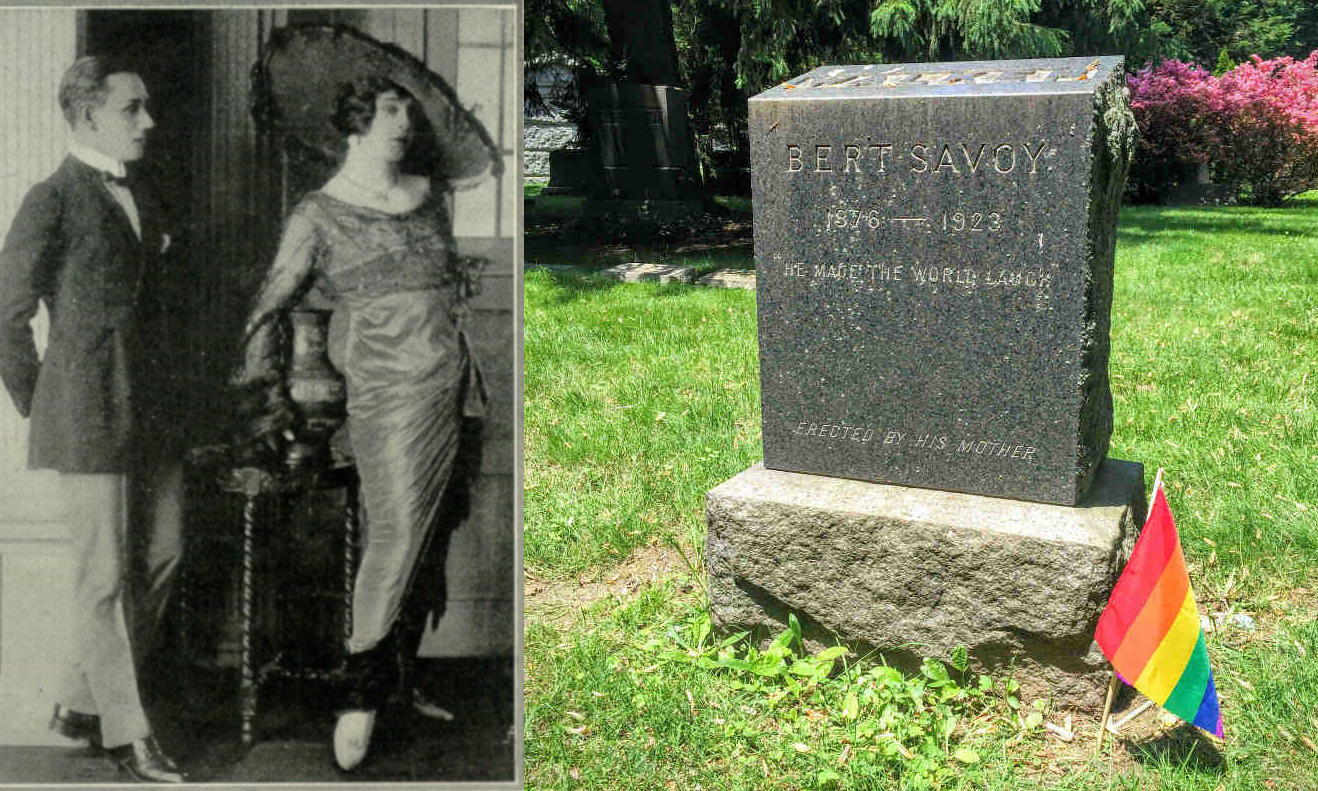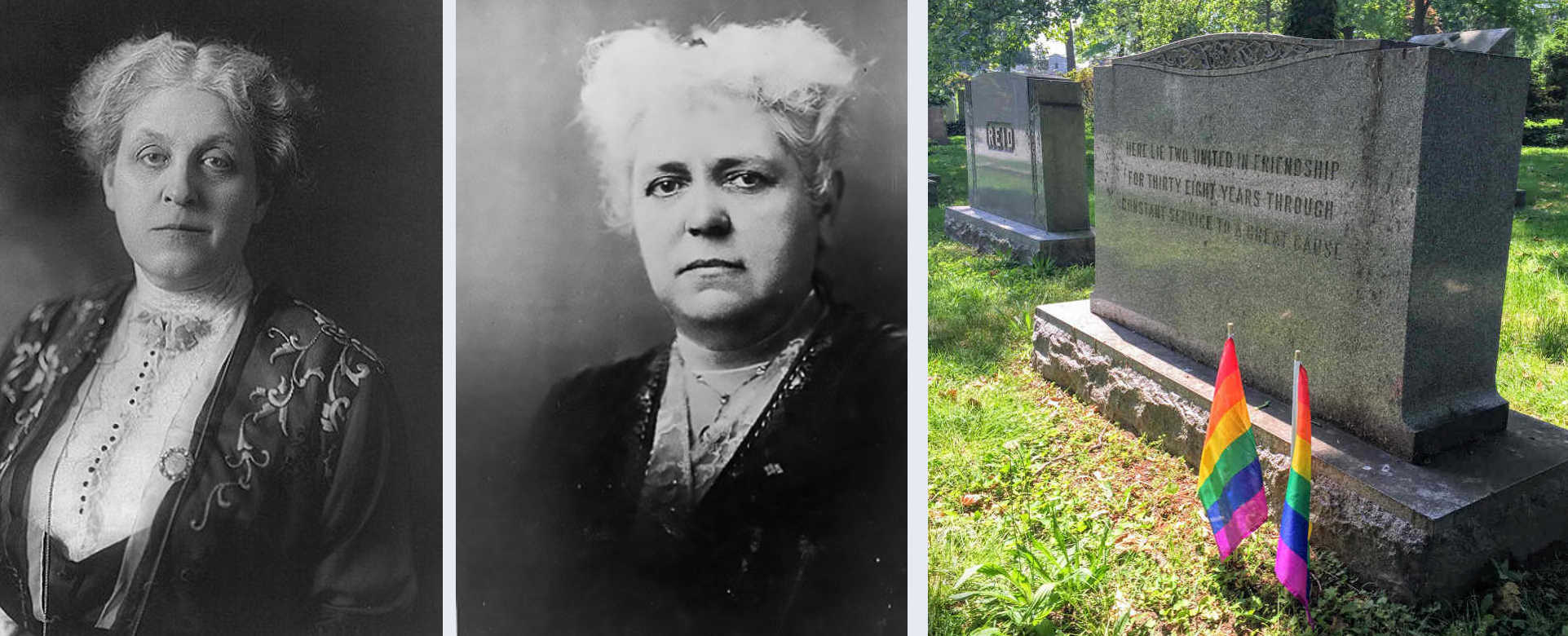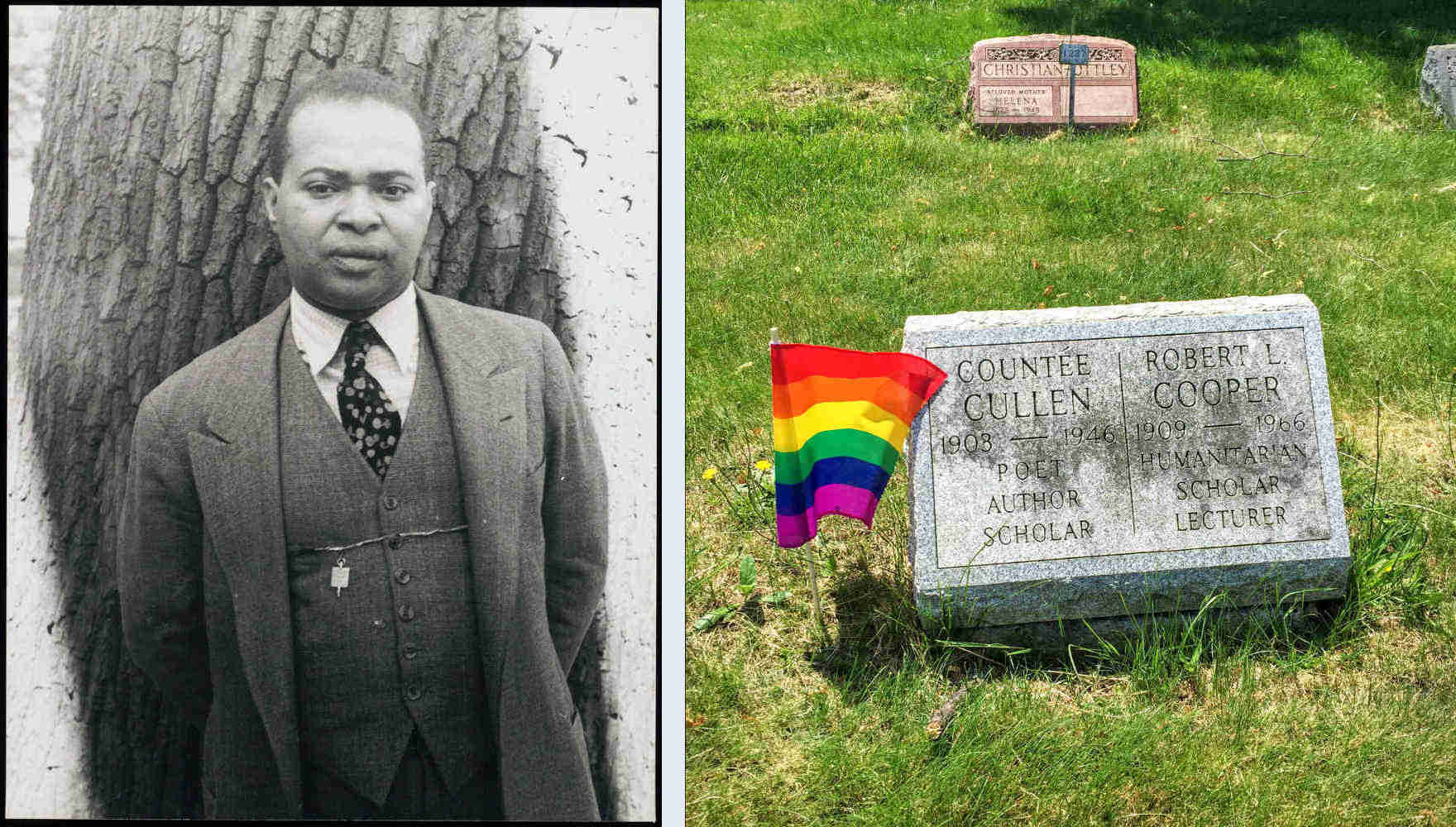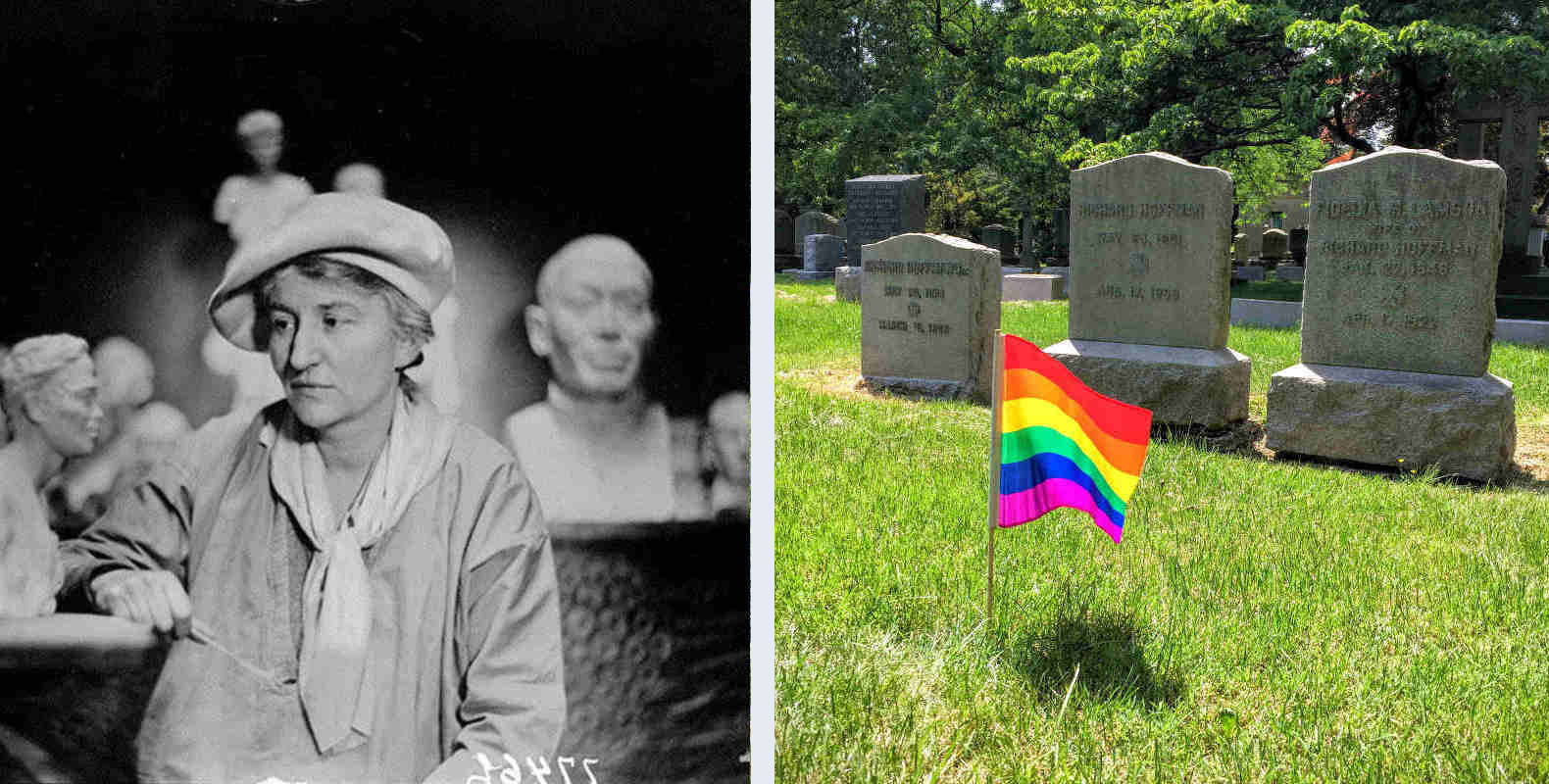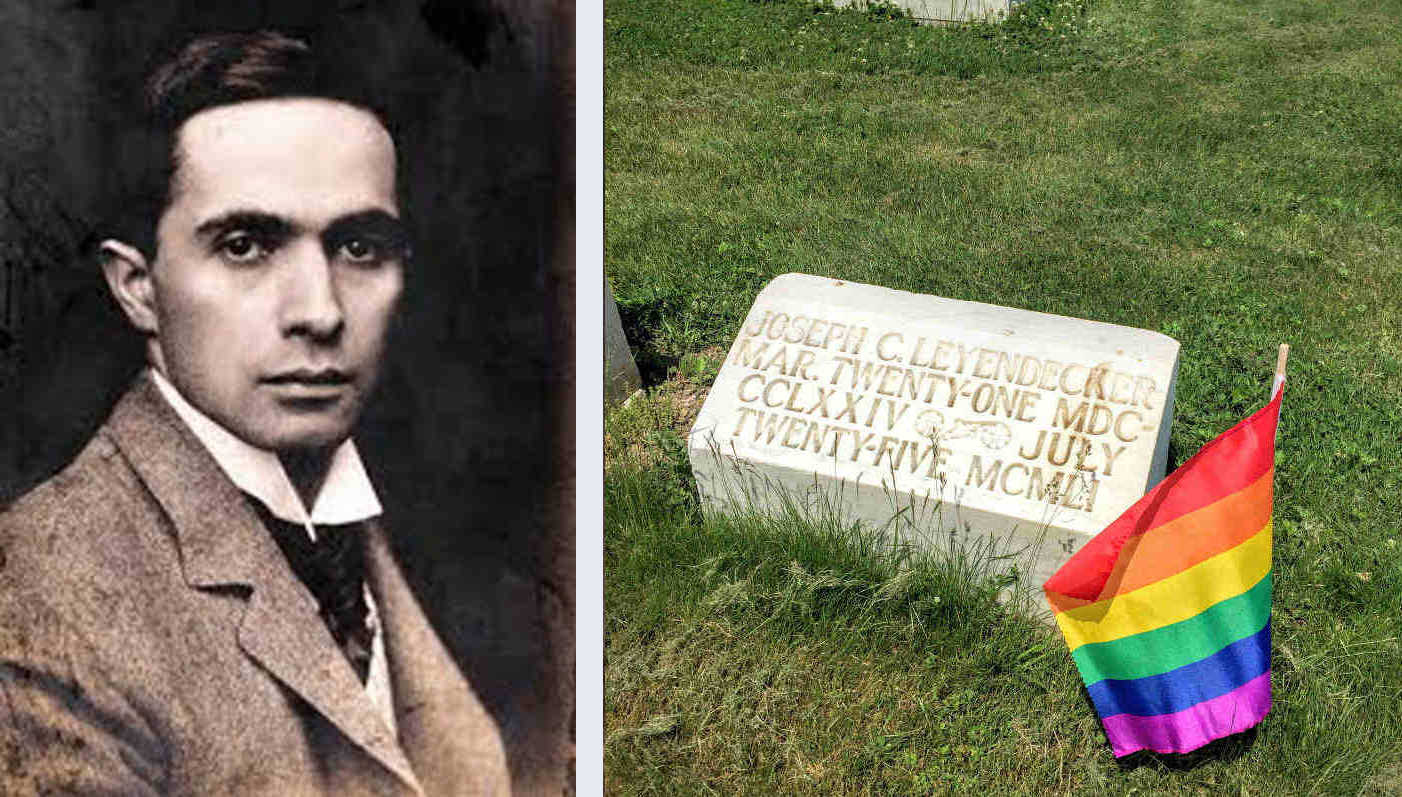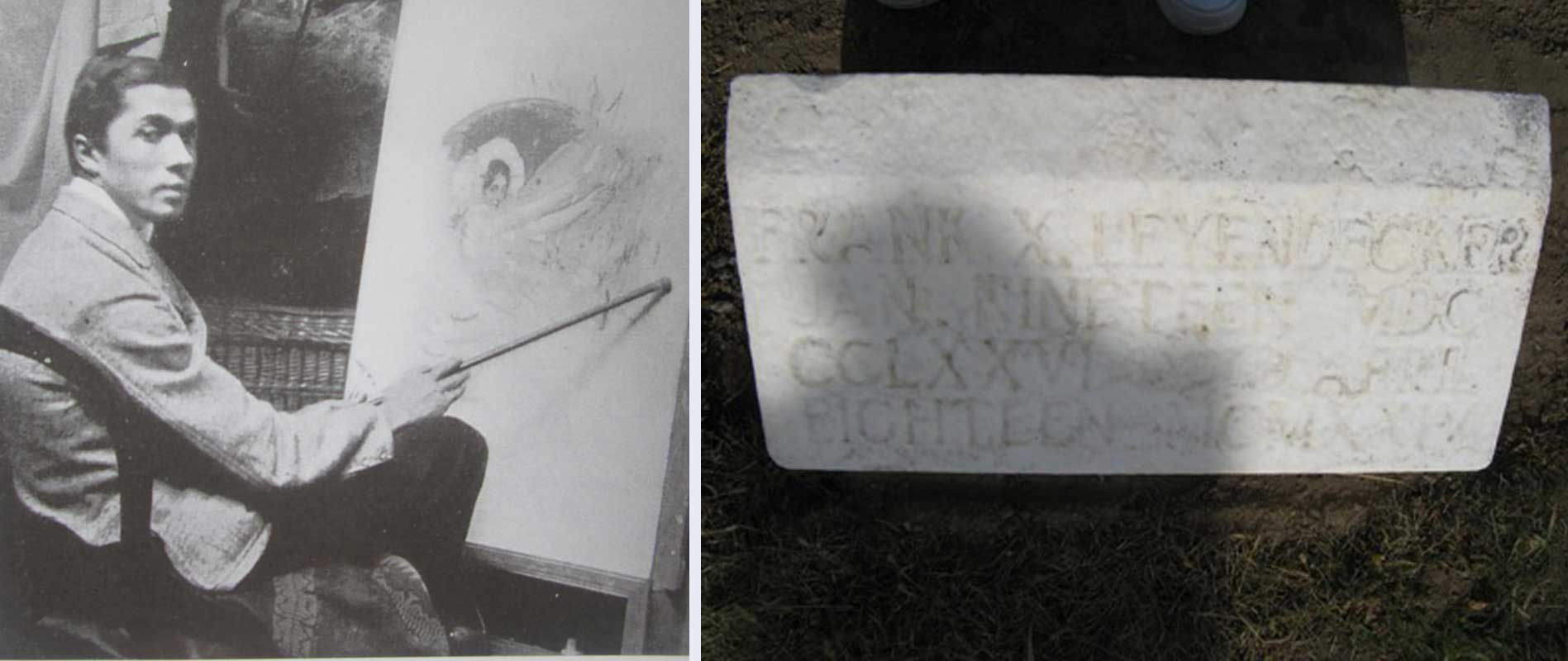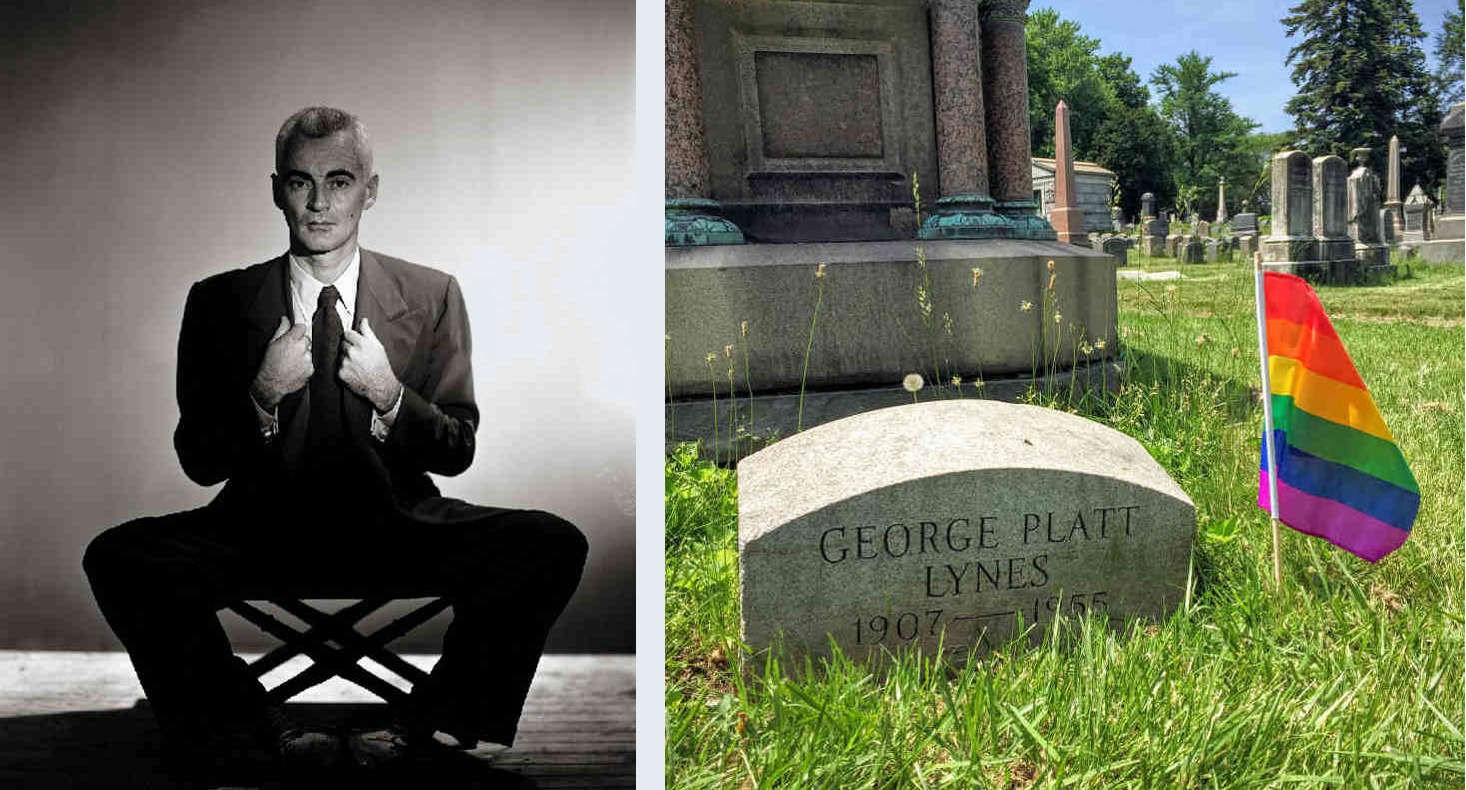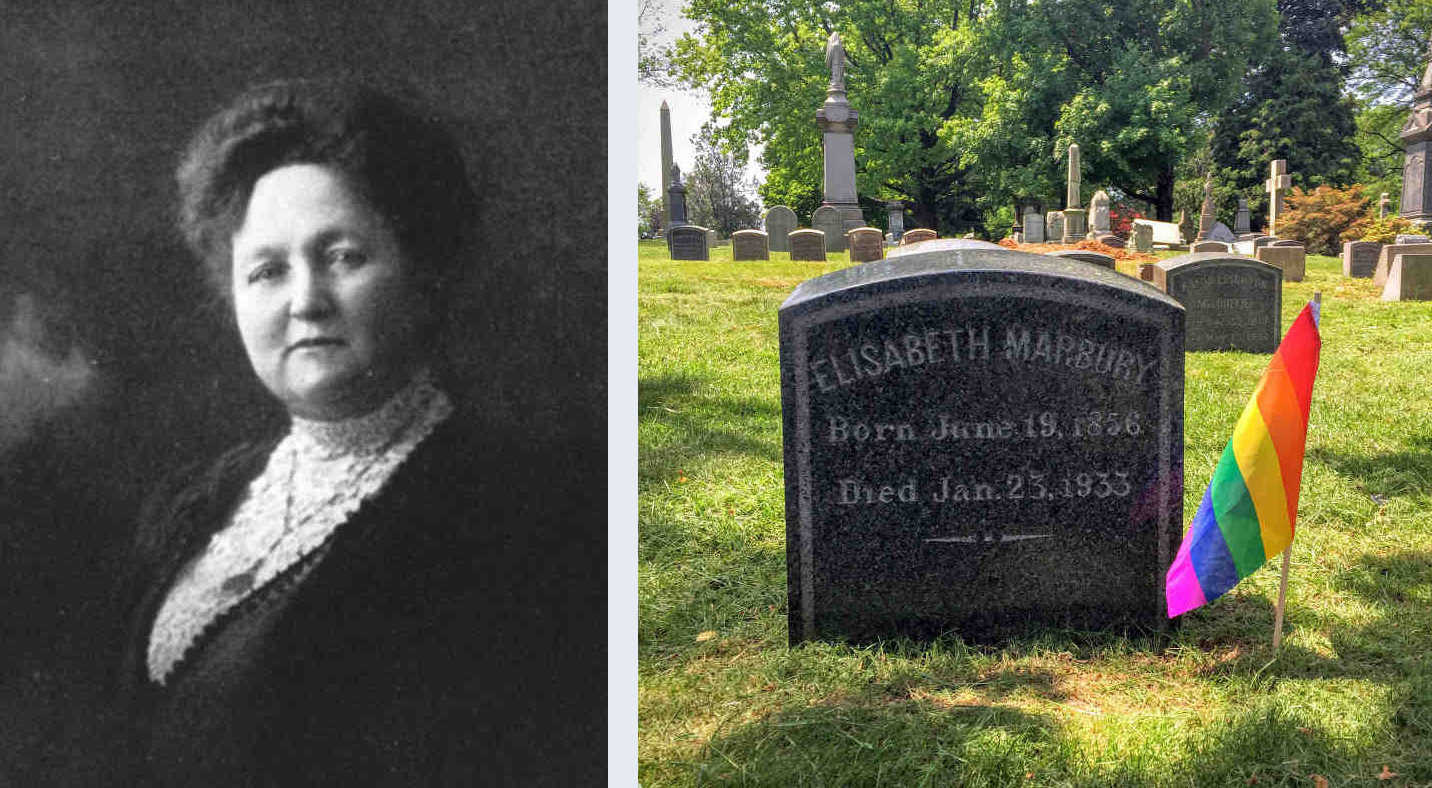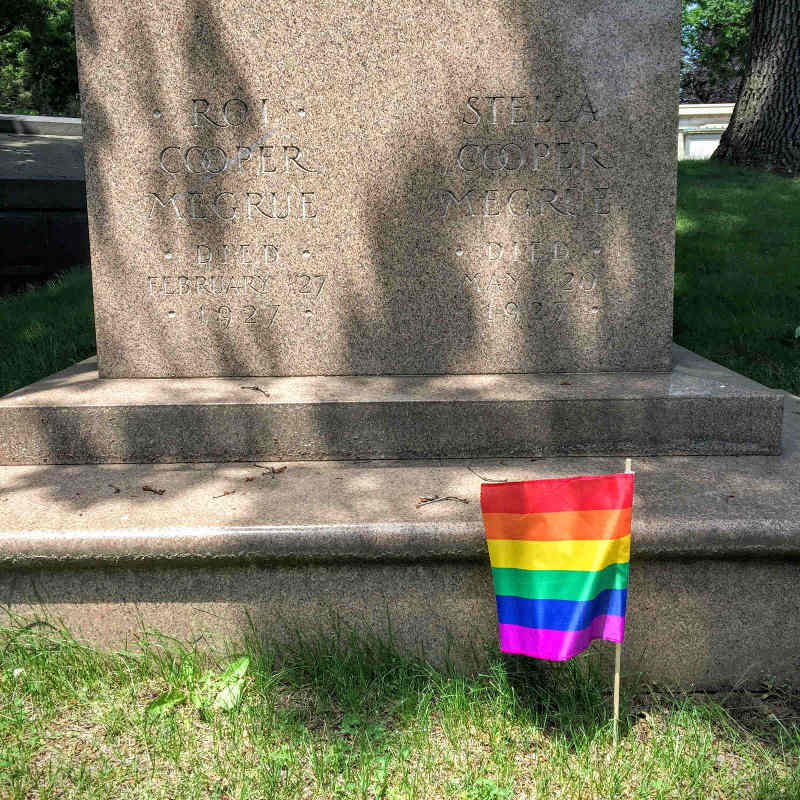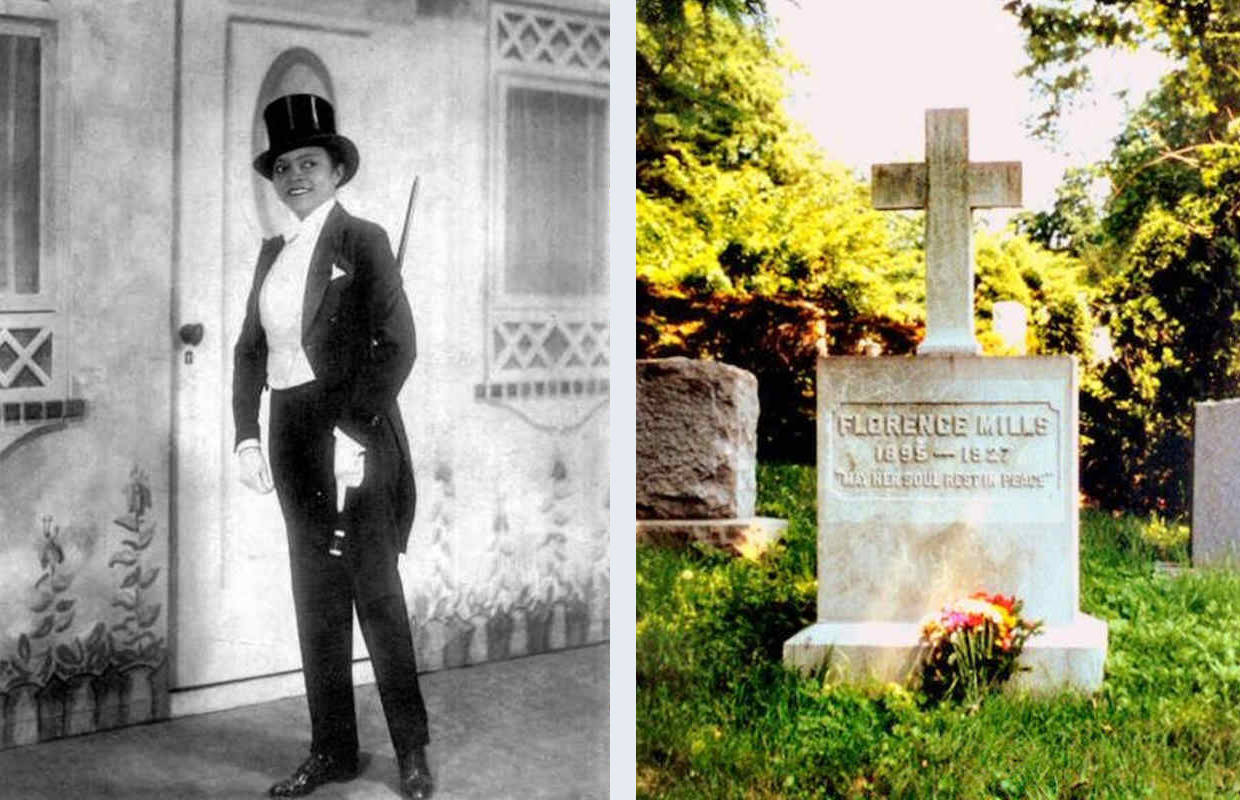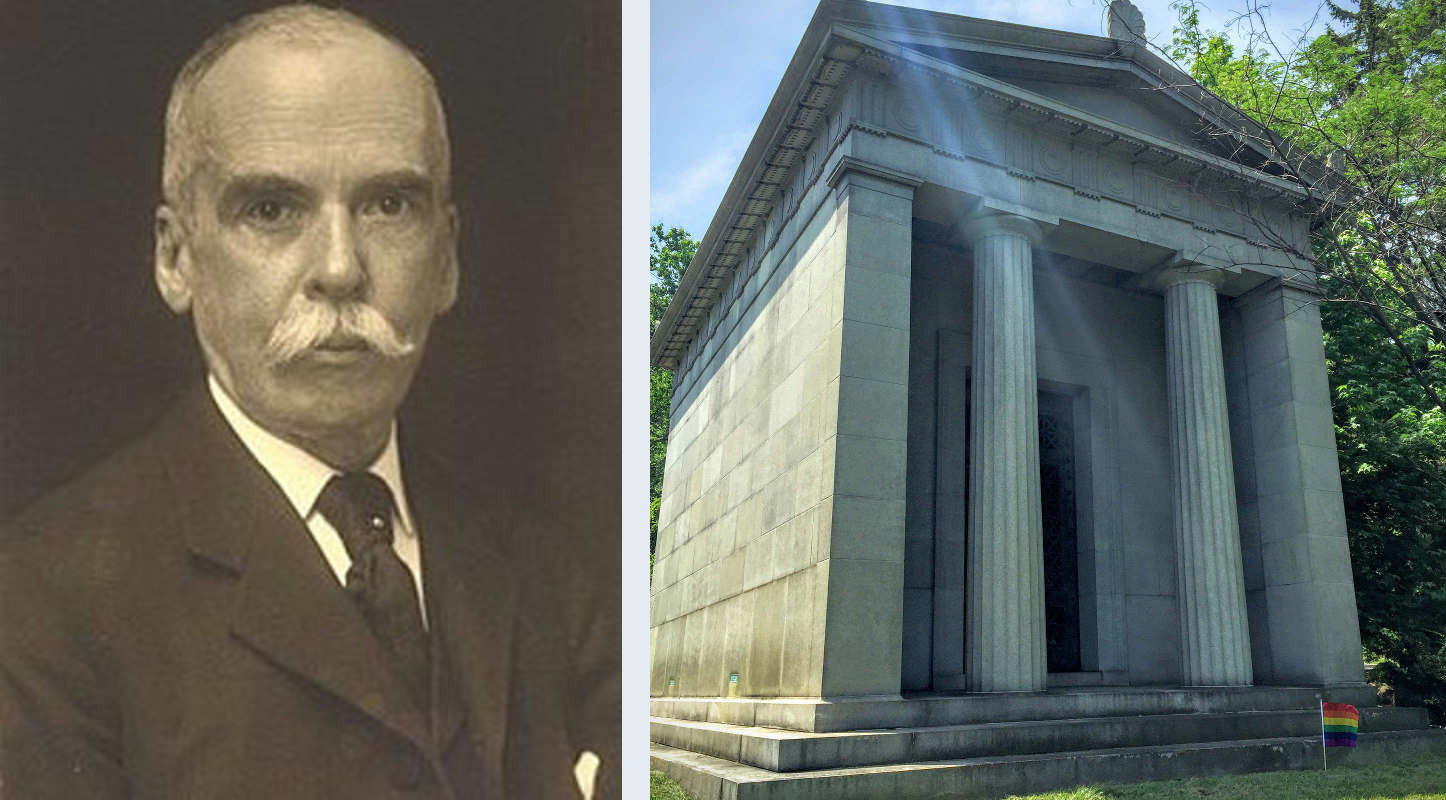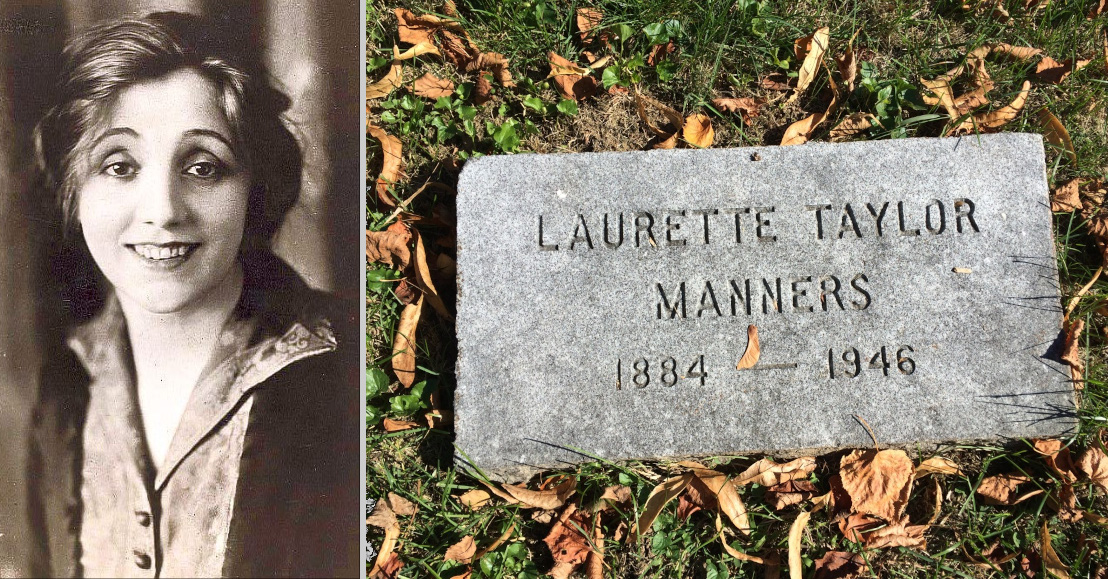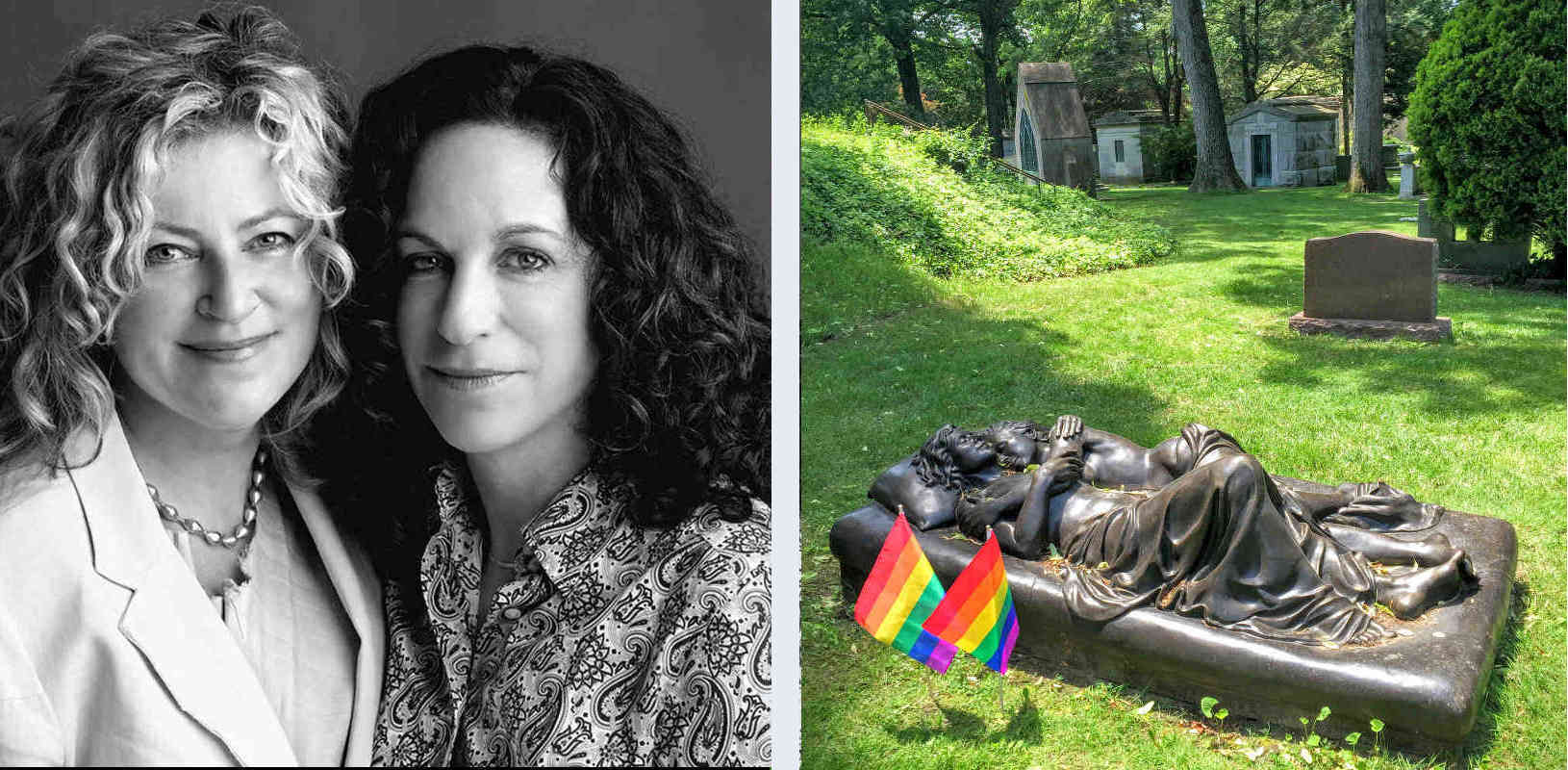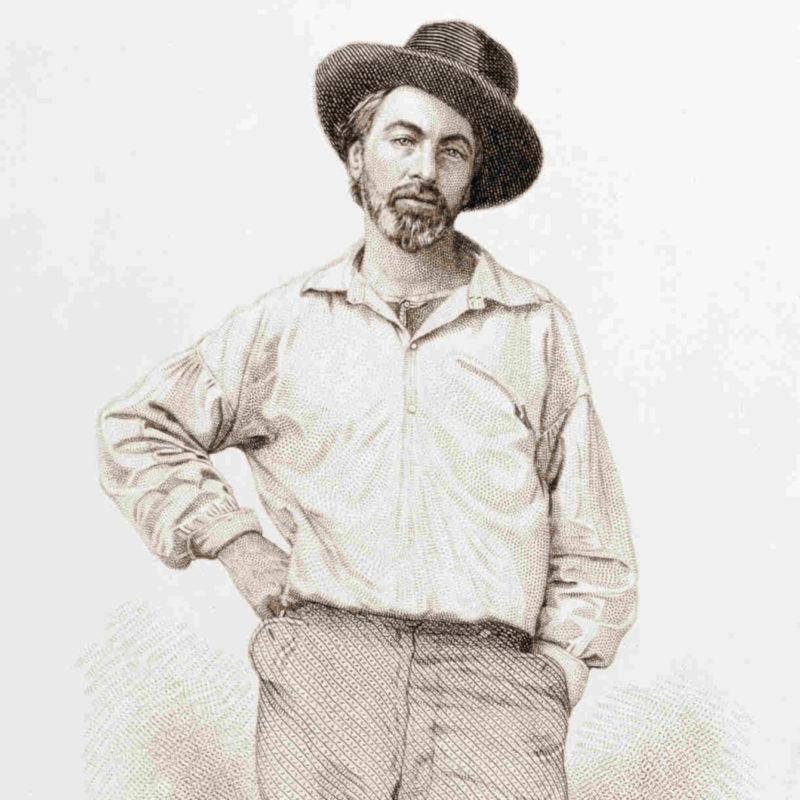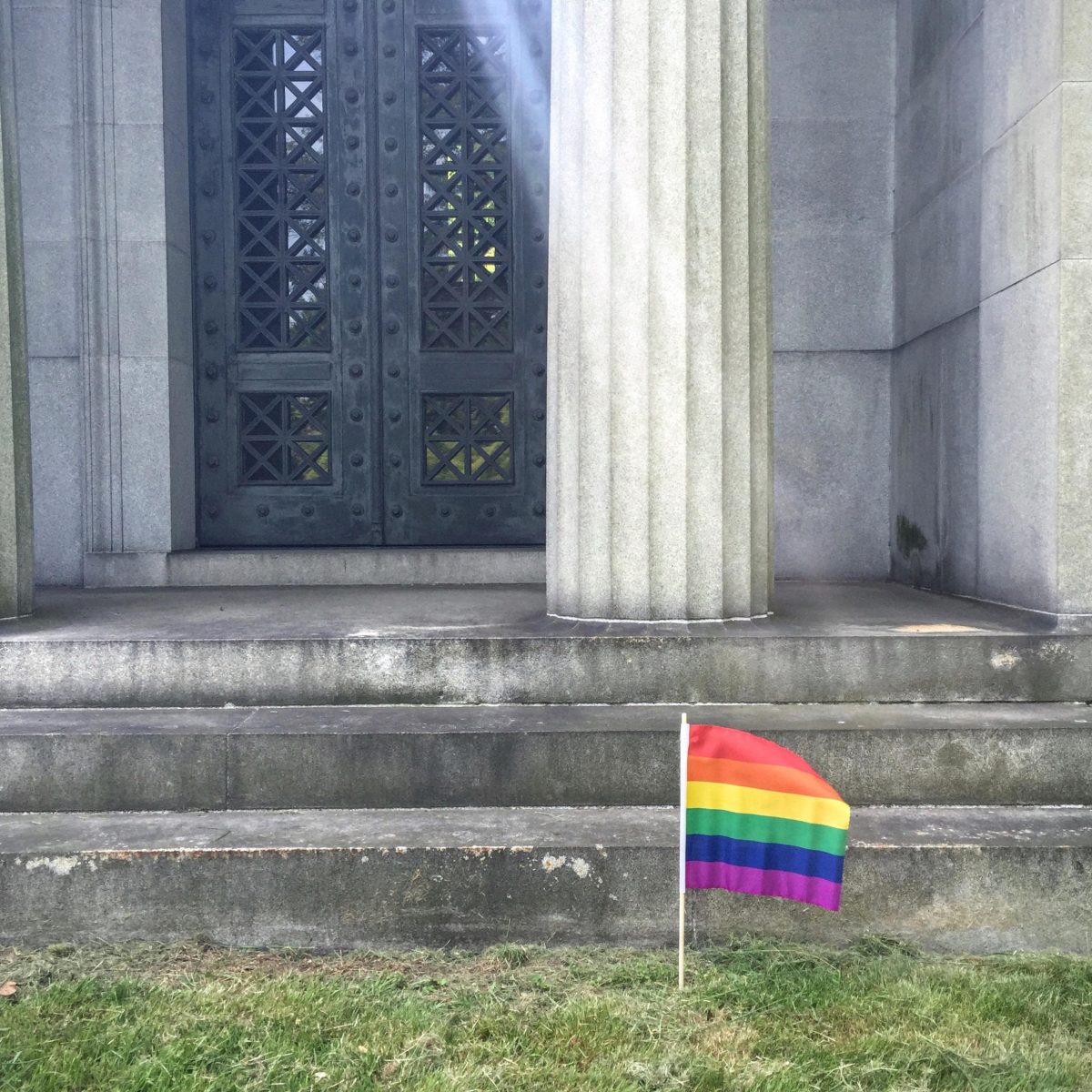
Woodlawn Cemetery
overview
Woodlawn Cemetery in the northern Bronx is not only a magnificent park-like landscape, but is the final resting place of many notable figures in the history of the United States.
Influential LGBT people include Carrie Chapman Catt, Countee Cullen, Malvina Hoffman, and George Platt Lynes.
On the Map
VIEW The Full MapHistory
Woodlawn Cemetery was founded in 1863. Many LGBT individuals have been interred here, including these well-known figures:
Vaudeville stars Jay Brennan (1882-1961) and Bert Savoy (1888-1923) are buried near each other at Woodlawn. In the 1910s and early 1920s, they were a well-known musical comedy duo, in which Brennan was the “straight” man and Savoy was the comedic “female impersonator.” They performed as the Society Jesters in the mid-1910s and also appeared in such acts as Passing Show (1915), Ziegfeld Follies of 1918, and Greenwich Village Follies (1922). According to drag lore, Savoy’s walk and manner was later borrowed by actress Mae West.
Leading suffragists Carrie Chapman Catt (1859-1947) and Mary Garrett Hay (1857-1928) were buried together at Catt’s request. Their gravestone reads:
Here lie two united in friendship for thirty eight years through constant service to a great cause.
Catt became president of the National American Woman Suffrage Association in 1900 and led the women’s movement in its final push for voting rights. Hay’s efforts in organizing parades and street rallies helped pass the New York suffrage amendment in 1917.
Countee Cullen (1903-1946) was a renowned African-American poet and leading figure of the Harlem Renaissance. He was also a teacher at Frederick Douglass Junior High School (now known as Frederick Douglass Academy) in Harlem, where future author and activist James Baldwin was one of his students.
Prolific playwright Clyde Fitch (1865-1909) wrote 62 plays in 19 years and was considered the most popular playwright on Broadway at the turn of the 20th century.
Malvina Hoffman (1887-1966) was the country’s most renowned female sculptor in the 1930s. Some of her sculptures can be found at the New-York Historical Society and the Bronx Hall of Fame.
Well-known commercial illustrator J.C. Leyendecker (1874-1951) created over 300 covers for The Saturday Evening Post and rivaled Norman Rockwell in the field of magazine illustrations. Many of his famous images of the Arrow Collar Man depict his partner Charles Beach (who is not buried at Woodlawn). He is buried alongside his brother, F.X. Leyendecker, who was a successful magazine illustrator.
George Platt Lynes (1907-1955) was a noted commercial and fashion photographer. He achieved fame after photographing notable writers, including Jean Cocteau, Gertrude Stein, Colette, and Andre Gide, and the George Balanchine/Lincoln Kirstein ballet companies which became the New York City Ballet. Privately, he produced a substantial collection of male nude and homoerotic photographs, many of which were acquired by the Kinsey Institute.
Elisabeth Marbury (1856-1933) was a pioneering literary agent and partner of decorator Elsie de Wolfe (who is not buried here). Marbury’s clientele included Oscar Wilde, W. Somerset Maugham, Sir James Barrie, Clyde Fitch, and Jerome Kern. Beginning in the 1890s, the couple held popular Sunday salons at their 122 East 17th Street residence.
Herman Melville (1819-1891) was a celebrated 19th century author who was born and later died in New York City. Though married to a woman, Melville has been the subject of discussion among scholars of LGBT history, such as Jonathan Ned Katz in Gay American History (1976) and Rictor Norton in My Dear Boy: Gay Love Letters Through the Centuries (1998). Melville’s personal letters and writings reveal an infatuation with author Nathaniel Hawthorne, with whom he had an intimate friendship, according to Katz. Homoerotic themes appear in his works Typee (1846), Omoo (1847), Mardi (1849), Redburn (1849) White Jacket (1850), Moby-Dick (1851), poems published in the 1870s, and Billy Budd (1891). The “A Squeeze of the Hand” chapter in Moby-Dick is referred to by Katz as “no doubt one of the most erotically suggestive scenes of male-male intimacy in American literature.” Melville’s first homoerotic written works are extraordinarily early for an American writer, pre-dating the “Calamus” poems in the 1860-revised edition of Leaves of Grass, written by Walt Whitman.
Early 20th-century playwright Roi Cooper Megrue (1883-1927) directed the first Pulitzer Prize-winning play, Why Marry?, which he also co-produced.
Florence Mills (1896-1927), known as the “Queen of Happiness,” was one of the most popular African-American entertainers in the 1920s before her untimely death at the age of 31. When Mabel Hampton was asked if Mills was gay, she responded, “Yeah, all of them girls were. Every last one of them. They didn’t call it ‘gay’–I don’t know what they called it–but all of them was one of those.”
John W. Sterling (1844-1918), a founder of the Shearman & Sterling law firm and the donor of the Sterling Memorial Library to Yale, built a large mausoleum at Woodlawn. In his will he stipulated that no one be placed in the mausoleum except for his sister and James O. Bloss, who, his will stated “has lived with me for more than forty years, should he desire to be interred in the said Mausoleum and should die without ever having been married.” Sadly, Bloss, who died shortly after Sterling, is not interred here.
Lawyer and opera patron William Matheus Sullivan is buried in Woodlawn with his partner, interior decorator Arcie Lubetkin.
Laurette Taylor (nee Helen Loretta Cooney, 1884-1946) was a legendary stage actress who became famous for her first big Broadway hit Peg O’ My Heart (1912-14 and 1921), written by her then-husband J. Hartley Manners. After years away from the stage, in part due to alcoholism, she made a spectacular comeback as the original Amanda Wingfield in Tennessee William’s The Glass Menagerie (1945-46). She is reputed by various writers to have had affairs with a number of famous actresses and prominent women.
The only monument at Woodlawn that overtly memorializes gay love is sculptor Patricia Cronin’s “Memorial to a Marriage,” installed in marble in 2002 before same-sex marriage was legal. In 2011, the marble was replaced with a bronze version. The sculpture depicts the artist and her wife, Deborah Kass, in a loving embrace. Both are still living.
There are many other members of the LGBT community buried at Woodlawn. If you know of anyone, please let us know so that we can remember them here.
Entry by Andrew S. Dolkart, project director (March 2017; last revised December 2018).
NOTE: Names above in bold indicate LGBT people.
Building Information
- Architect or Builder: various landscape architects
- Year Built: beginning in 1863
Sources
Charles D. Warren, Carole Ann Fabian, and Janet Parks, eds., Sylvan Cemetery: Architecture, Art & Landscape at Woodlawn (New York: Avery Architectural & Fine Arts Library/The Woodlawn Conservancy, 2014).
Eve Golden, “Queen of the Dead: Bert Savoy,” The Daily Mirror, October 30, 2012, bit.ly/2CB7u7d.
James F. Wilson, Bulldaggers, Pansies, and Chocolate Babies: Performance, Race, and Sexuality in the Harlem Renaissance (Ann Arbor: University of Michigan Press, 2010).
Jonathan Ned Katz, Gay American History (Springfield, OH: Crowell, 1976).
Rictor Norton, My Dear Boy: Gay Love Letters Through the Centuries (San Francisco: Leyland Publications, 1998).
Susan Olsen, Director of Historical Services, The Woodlawn Cemetery.
Do you have more information about this site?
This project is enriched by your participation! Do you have your own images of this site? Or a story to share? Would you like to suggest a different historic site?
